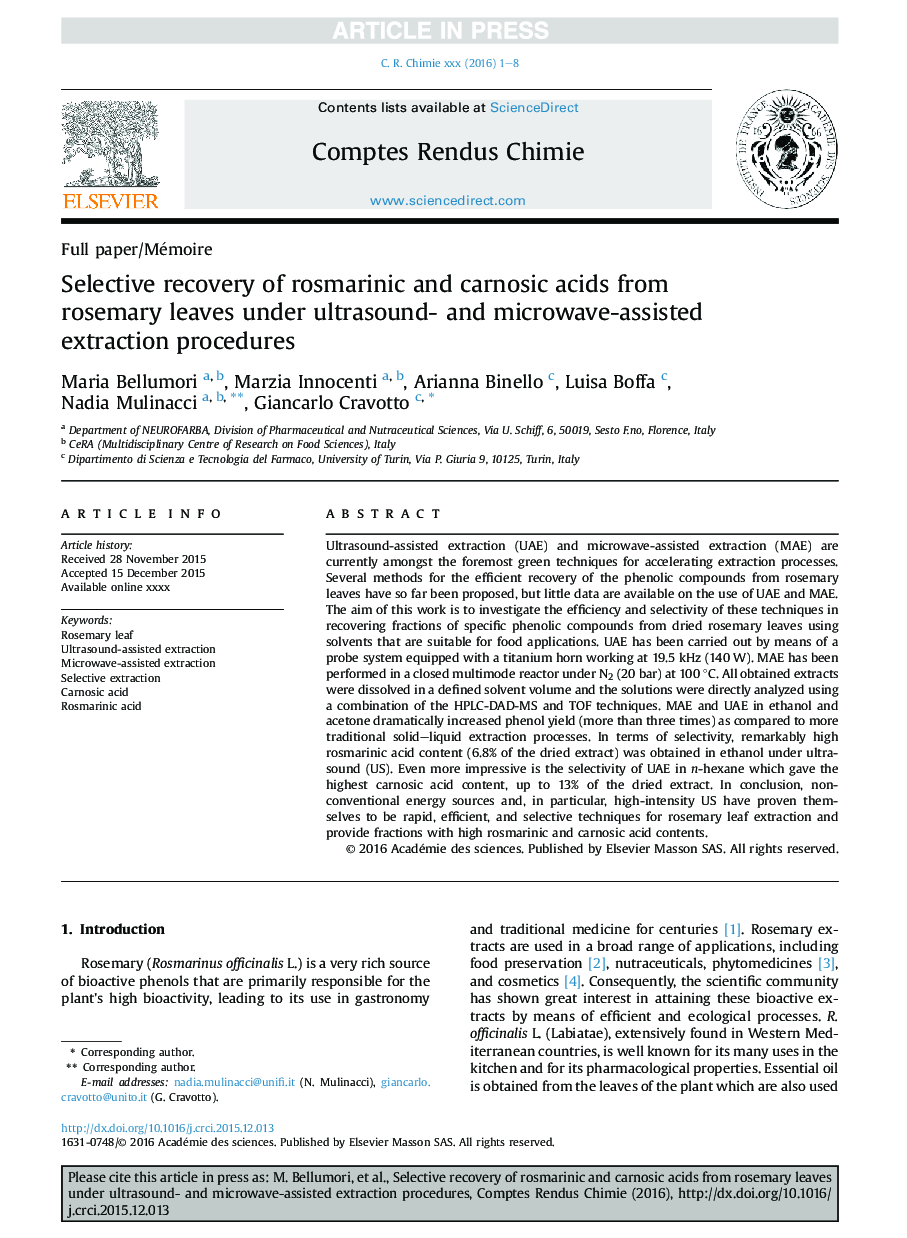| Article ID | Journal | Published Year | Pages | File Type |
|---|---|---|---|---|
| 10265118 | Comptes Rendus Chimie | 2016 | 8 Pages |
Abstract
Ultrasound-assisted extraction (UAE) and microwave-assisted extraction (MAE) are currently amongst the foremost green techniques for accelerating extraction processes. Several methods for the efficient recovery of the phenolic compounds from rosemary leaves have so far been proposed, but little data are available on the use of UAE and MAE. The aim of this work is to investigate the efficiency and selectivity of these techniques in recovering fractions of specific phenolic compounds from dried rosemary leaves using solvents that are suitable for food applications. UAE has been carried out by means of a probe system equipped with a titanium horn working at 19.5 kHz (140 W). MAE has been performed in a closed multimode reactor under N2 (20 bar) at 100 °C. All obtained extracts were dissolved in a defined solvent volume and the solutions were directly analyzed using a combination of the HPLC-DAD-MS and TOF techniques. MAE and UAE in ethanol and acetone dramatically increased phenol yield (more than three times) as compared to more traditional solid-liquid extraction processes. In terms of selectivity, remarkably high rosmarinic acid content (6.8% of the dried extract) was obtained in ethanol under ultrasound (US). Even more impressive is the selectivity of UAE in n-hexane which gave the highest carnosic acid content, up to 13% of the dried extract. In conclusion, non-conventional energy sources and, in particular, high-intensity US have proven themselves to be rapid, efficient, and selective techniques for rosemary leaf extraction and provide fractions with high rosmarinic and carnosic acid contents.
Keywords
Related Topics
Physical Sciences and Engineering
Chemical Engineering
Chemical Engineering (General)
Authors
Maria Bellumori, Marzia Innocenti, Arianna Binello, Luisa Boffa, Nadia Mulinacci, Giancarlo Cravotto,
